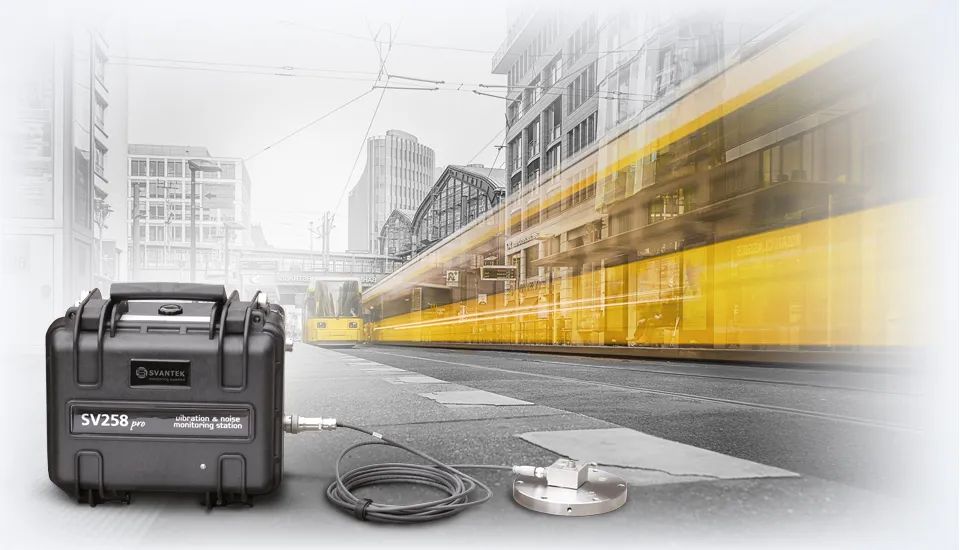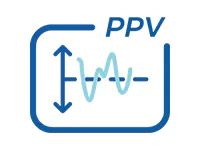How to measure the vibration of a building?
Vibration occurring in a structure can be detected directly using an accelerometer, a displacement transducer, or a velocity transducer. The measure is a Peak Particle Velocity which is the maximum absolute value of the unweighted signal (particle velocity signal) throughout the measurement.
Following DIN 4150-3 measurement of the structure as a whole shall be based on the topmost floor vibration velocity, measured in two horizontal directions. As an alternative to evaluating the topmost floor horizontal vibrations, measurements can also be taken at the foundation.
How to measure building content vibration?
Vibration influencing sensitive objects in buildings is assessed using an accelerometer, or a velocity transducer measuring walls or floor vibrations. Following the IEST standard, the RMS of vibration velocity in 1/3 octave bands is used to measure the floor vibration effects on sensitive equipment in buildings.
How can the human perception of vibrations in buildings be measured?
The human exposure to floor vibration is assessed using an accelerometer, or a velocity transducer. Following ISO standards, common measures of human response to vibrating floors are the PEAK and RMS of vibration acceleration or velocity or VDV of vibration acceleration.
What are perceptible vibration levels for humans?
Following ISO 2631-1, the vibration PEAK acceleration of 0.015 m/s2 is an acceptable vibration level for building occupants. If the floor vibrations are only slightly above this level then building occupants are likely to complain. In practice, the building users’ perceptible vibration ranges from 0.01 m/s2 to 0.02 m/s2 PEAK.
The American Institute of FTA (Federal Transit Administration) and FRA (Federal Railroad Administration) mention low amplitudes limits of 0.045 to 0.08 for human perception of vibration velocity.
The German DIN 4150-2 standard, sets the limit for human beings at 0.1 KB, where 1 KB is referenced as 1 mm/s of a weighted RMS of perceptible vibration velocity.
Building structure vibration standards
The most recognizable standards for structural vibration measurements are ISO 4866, British BS 7385-2, and German DIN 4150-3. All these three standards use Peak Particle Velocity (PPV) method and FFT to define the Dominant Frequency.
What are PPV and Dominant Frequency?
The method for PPV Peak Particle Velocity and Dominant Frequency (DF) is described in German Standard DIN 4150-3. The PPV is a maximum value of the amplitude of the vibration velocity time-domain signal. To detect a dominant frequency of PPV, the method requires performing an FFT analysis. The result of such analysis is the PPV value and its corresponding Dominant Frequency for each axis (X, Y, Z). Each pair of PPV and its DF are used as point coordinates that are compared with the vibration limit curve.
Criteria and limits
The standard DIN 4150-3 defines the values which must be met to avoid damage and impact on structures. Do different PPV limits apply depending on the building types in the frequency range from 1 Hz to 100 Hz :
- from 20 mm/s up to 50 mm/s – for buildings used for commercial and industrial buildings,
- from 4 mm/s up to 20 mm/s for residential buildings,
- from 3 mm/s up to 10 mm/s for building sensitive to vibration that has great intrinsic value
British Standard BS 7385-2
BS 7385-2 guides the assessment of the possibility of vibration-induced damage in buildings due to a variety of common sources. Vibration common sources that are considered include blasting, demolition, piling, ground treatments (e.g. compaction), construction equipment, tunneling, road and rail traffic, and industrial machinery-induced vibrations. It gives guidance on the levels of vibration above which building structures could be damaged. Only the direct effect of vibration on buildings is considered. The indirect effects on the building structure due to ground movement, the movement of loose objects within buildings, the possibility of damage to sensitive equipment, and the effect of vibration on people are outside the scope of this standard. The lowest frequency originating from man-made common sources is 1 Hz and the highest frequency expected from either machinery or close-in construction blasting on hard ground is 1 000 Hz, however, to select guide values more limited range of 4 Hz to 250 Hz is taken into consideration. BS standards indicate two types of buildings:
- reinforced or framed structures Industrial and heavy commercial buildings,
- unreinforced or light framed structures Residential or light commercial type buildings.
Short-term and long-term vibrations
The standard DIN 4150-3 divides vibrations into:
- short-term vibrations, which do not occur frequently enough to cause fatigue and do not cause resonance in the assessed structures,
- long-term vibrations, on the other hand, are all vibration types that cannot be classified as short-term vibrations
What are VC curves for vibration?
VC Vibration Criterion Curves expressed as 1/3 octave bands of RMS vibration velocity, are vibration limits used by the American standard IEST for the measurement of vibration-sensitive equipment.
To meet American standards (IEST) that use 1/3 octave bands VC Vibration Criterion curves expressed in RMS vibration velocity, the 1/3 octave band method compares RMS results in each band to the limit curve. So in fact the whole spectrum is used for comparison unlike in the FFT method where the point (PPV, DF) is positioned versus the curve.
What are vibration modes?
A vibration mode is a method of vibrating, or a pattern of vibration when applied to a system or structure with many points and varying amplitudes of movement. The two elements of a vibration mode are, a time variation of the vibration and, second, a spatial variation of the amplitude of the motion across the structure.






